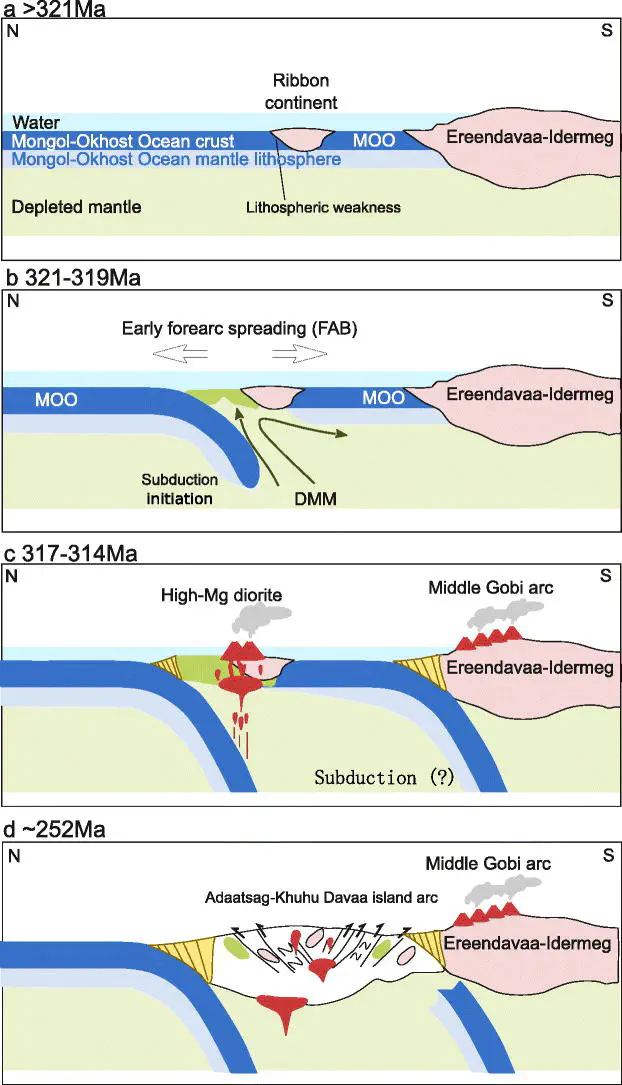Evidence for early Pennsylvanian subduction initiation in the Mongol–Okhotsk Ocean from the Adaatsag ophiolite (Mongolia)
 Early Pennsylvanian subduction initiation
Early Pennsylvanian subduction initiationAbstract
The Late Paleozoic–Mesozoic Mongol–Okhotsk Ocean was the latest ocean basin witnessing the final amalgamation of East Asia. However, the kinematic evolution and geodynamics of Mongol–Okhotsk’s subduction initiation remain enigmatic mainly due to the lack of appropriate studies of its ophiolitic records. Here, we report for the first time a subduction initiation record from the Adaatsag ophiolite in the central Mongolia. This ophiolite presents a magmatic sequence akin to that in the Izu–Bonin–Mariana forearc, considered archetypical of subduction initiation. The gabbroic and basaltic rocks of the ophiolite display geochemical signatures similar to the forearc basalts. Zircon Usingle bondPb geochronology of the gabbro shows a mean age of 319 ± 2 Ma, which we interpret as crystallization age. The high-Mg diorite intruding the gabbros of the ophiolite displays a transitional affinity between sanukite and boninite. Zircon Usingle bondPb geochronology of the high-Mg diorite shows a mean age of 317 ± 2 Ma. Together with the neighbor Khuhu Davaa suprasubduction zone ophiolite (∼321 Ma), we interpret that the subduction of the southwestern Mongol–Okhotsk Ocean initiated during the Early Pennsylvanian (∼320 Ma). The structurally underlying gneissic granite (∼534 Ma) indicates the Adaatsag ophiolite was emplaced southward onto the Ereendavaa cratonic terrane, and the overlying molassic sequences (youngest detrital zircon peak age of ∼252 Ma) constrain this emplacement occurred before ∼252 Ma. The older (499–870 Ma) inherited zircons of the ophiolites and negative Hf isotope data of the high-Mg diorite indicate that a continental fragment existed in the newly formed intra-oceanic arc, which probably facilitated the Early Pennsylvanian subduction initiation in the Mongol–Okhotsk Ocean.